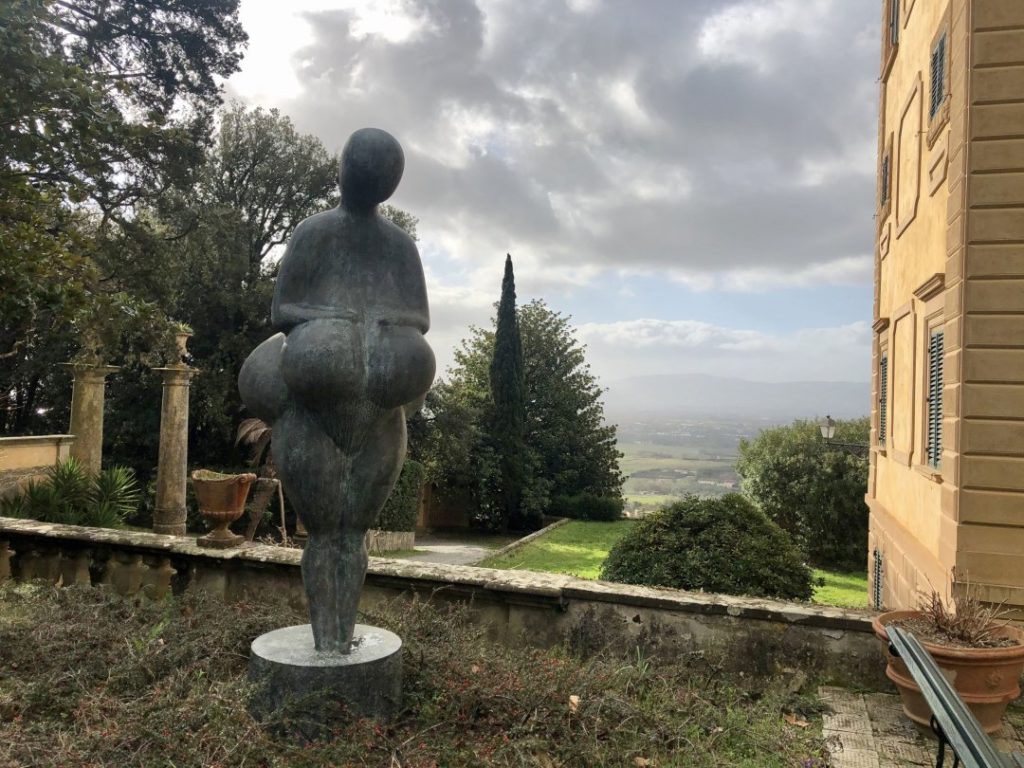
By Patrizia Passerini –
History of Fattoria de Celle
Fattoria di Celle is an estate dating back to the 15th century, located in Santomato (near Pistoia) about thirty kilometres from Florence, in the heart of Tuscany. It represents a unique reality, where art, history and nature meet in an amazing venue of evocative beauty. The estate consists of the historic, fascinating and imposing Villa, dating back to the fifteenth century and other buildings such as Cascina Terrarossa, Casa Beppe, la Fattoria (the farm) and a magnificent Parco. In the 15th century the Villa with the surrounding land belonged to the Pazzaglia family, and later passed to the Fabbroni, a noble family from Pistoia who began the transformation of the buildings and the arrangement of the garden.
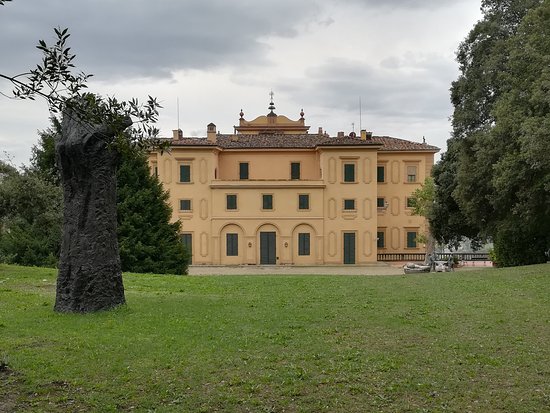
This was transformed, in the first half of the 19th century, in “Parco Romantico“, with a lake, a small island hosting a temple in neoclassical forms, a rocky “orrido“, crossed by a small bridge, on which a waterfall breaks, a neo-Gothic Pavilion, used as a Tea House, a romantic iron aviary and an Egyptian-style monument. It’s in this wonderful place that you will find one of the most important collections in the world of Site Specific Art, that Giuliano Gori has created since the ‘50.
The Gori Collection of Contemporary Art
Giuliano Gori, with an enlightened gaze, animated by curiosity and courage, has dedicated his life to find out art, moved not only by passion for multiple artistic expressions, but also by a sincere spirit of sharing experiences with the artists. They have lived here, in the estate, in close contact with his family, wrapping their lives around the landscape, which has become the defined and lasting protagonist.
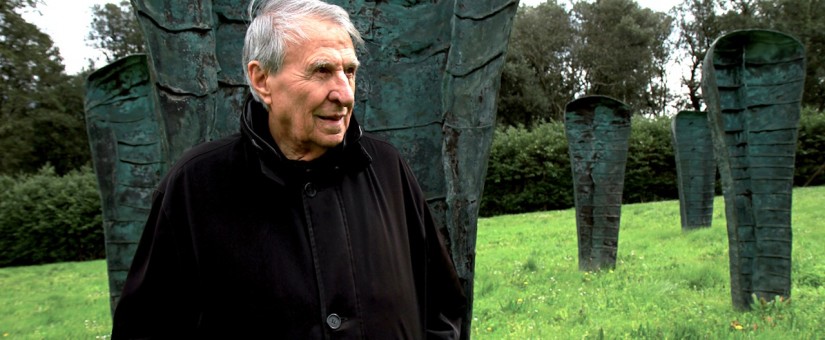
The collection of contemporary artworks was started by Giuliano and his wife Pina in the 1950s, encouraging artists who adopted an innovative expressive language. Later, the increasing number of works pushed Giuliano to look for a suitable space, which could be a meeting venue for artists, critics and art lovers, a sort of cenacolo.
The Site Specific Art Project (Arte Ambientale)
In 1970 the Collection was moved to Fattoria di Celle and the Site Specific Art Project started.
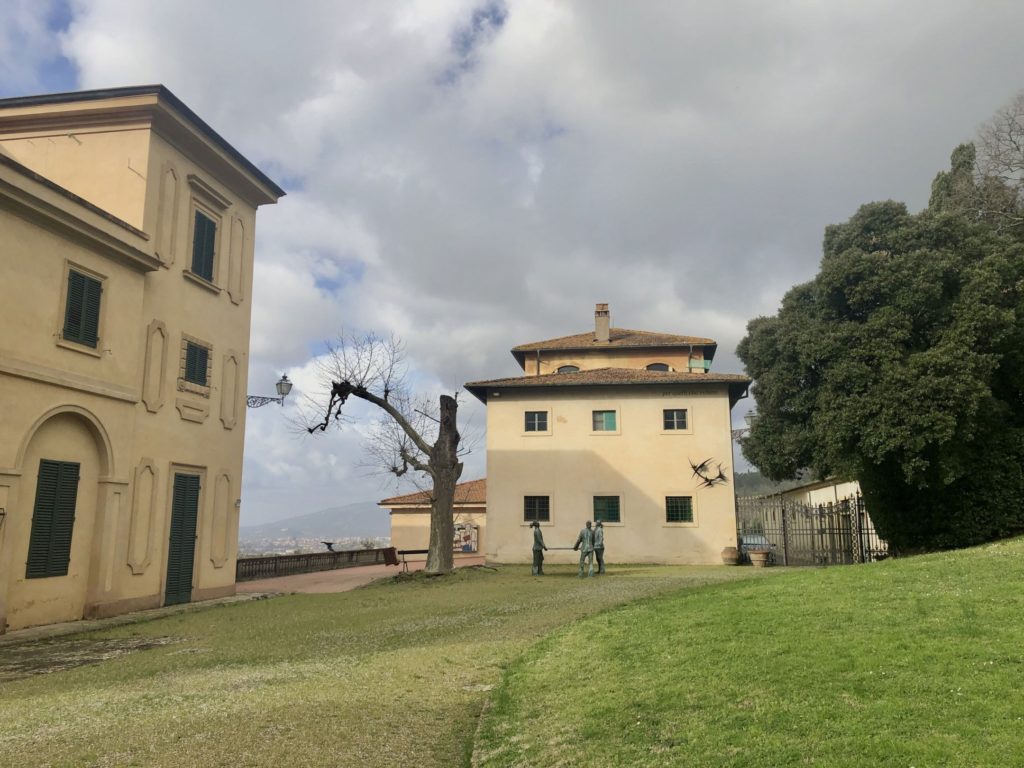
“Site Specific Art” means that the site is not only the container of the work but becomes an important and real part of the work itself. The artist is invited to stay at Celle to live and explore the space, to discover the place which will become the site of his work. In this context, the artist chooses the site where the work will be placed, outside or inside one of the historic buildings, as well as he chooses the subject and materials. The environment contributes to the realization of the expressive form and offers its participation, arousing emotions: artist and work create a real relationship with it, creating a unique perspective. In 1982 the Collection opened to the public with eighteen works, ten in the Park and eight in the historic buildings. Today the Collection houses more than seventy works. Many artists have worked here, such as Robert Morris, George Trakas, Richard Serra, Dani Karavan, Aiko Miyawaki, Magdalena Abakanowicz, Ian Hamilton Finlay, and many others. Even today Fattoria di Celle continues to be a workshop that welcomes different creative forms and artists from all over the world.
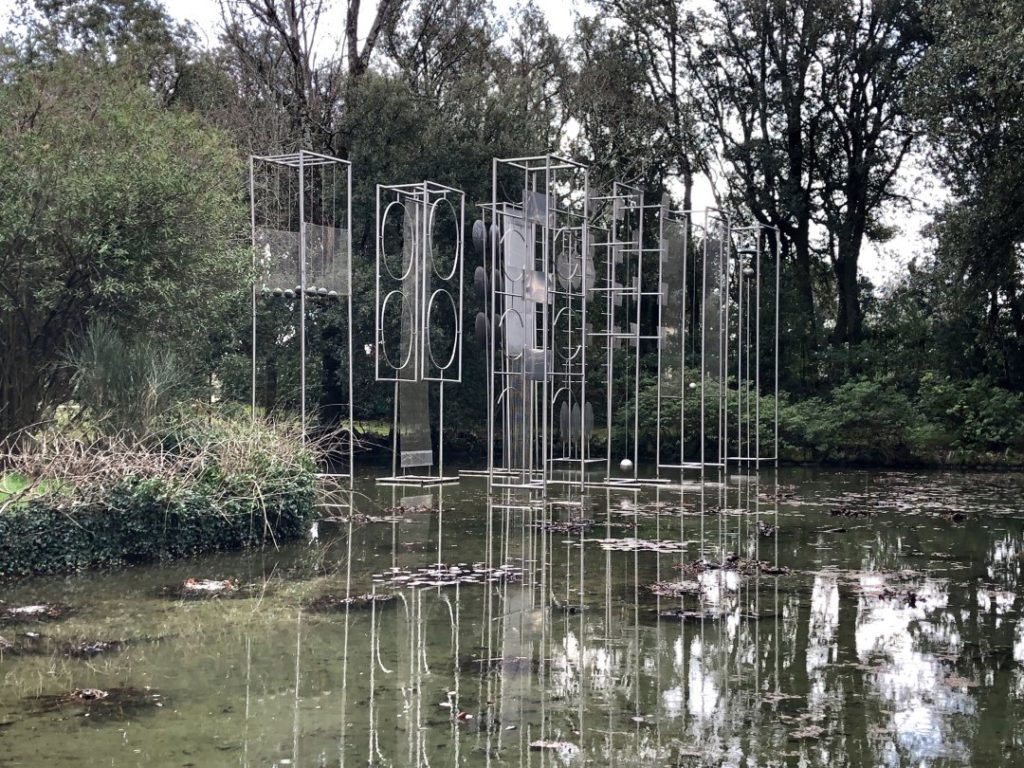
Welcoming artists
Giuliano Gori has always been moved by the deep belief that you have to know artists first of all as persons, in order to establish a relationship of trust that allows them to reach the maximum expressive tension. For this reason, there are many artists who have stayed in Celle, and there are many stories that witness friendship and collaboration with them.
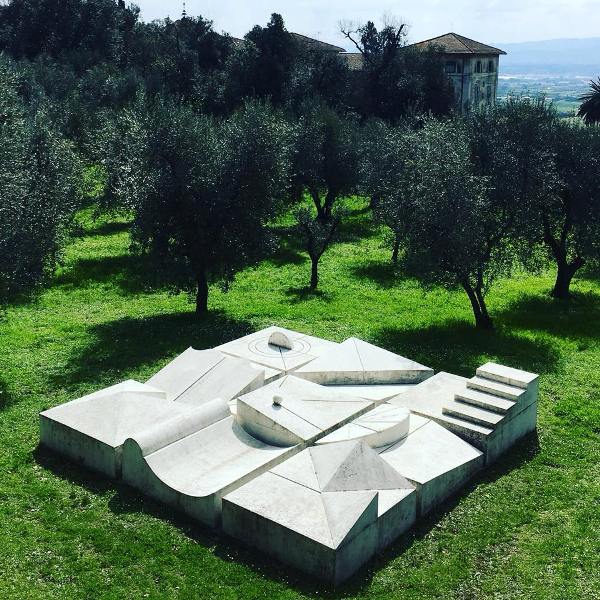
The friendship between Robert Morris and Giuliano Gori
Exploring Giuliano Gori’s memories, “the friendship with Bob”, Robert Morris, has left a special mark. Robert Morris, an American sculptor, is one of the main artists of minimalism, but he made significant contributions to performance art and installation as well. Meeting Celle represents an important moment in the evolution of the artist’s poetics and work, becoming a turning and innovation point. Giuliano Gori’s own words show this aspect better than any other and allow to understand the meaning of the relationship with the artist, a bond that creates a space of trust and collaboration:
“Celle stayed in Bob’s heart because he changed his way of being an artist here. After finishing Labirinto, he wrote to me from America to say that he had left in Celle his ‘last minimalist work’, communicating his desire to return to Celle to find himself, after the abandonment of Minimalism. He asked me for a new stay, aimed at the creation of the work that would mark the future path, asking me immediately a very precise request: he wanted to work in total isolation, without seeing anyone, not even me.I answered that he was welcome here and he would find everything to proceed with his work. After his arrival, he locked himself in the Fattoria, creating the magnificent Hypnerotomachia-Psychomachia installation, which is still shown in the room where he created it. Due to these transformations and experimentations, Robert Morris is well represented at the Gori Collection like nowhere in the world”.
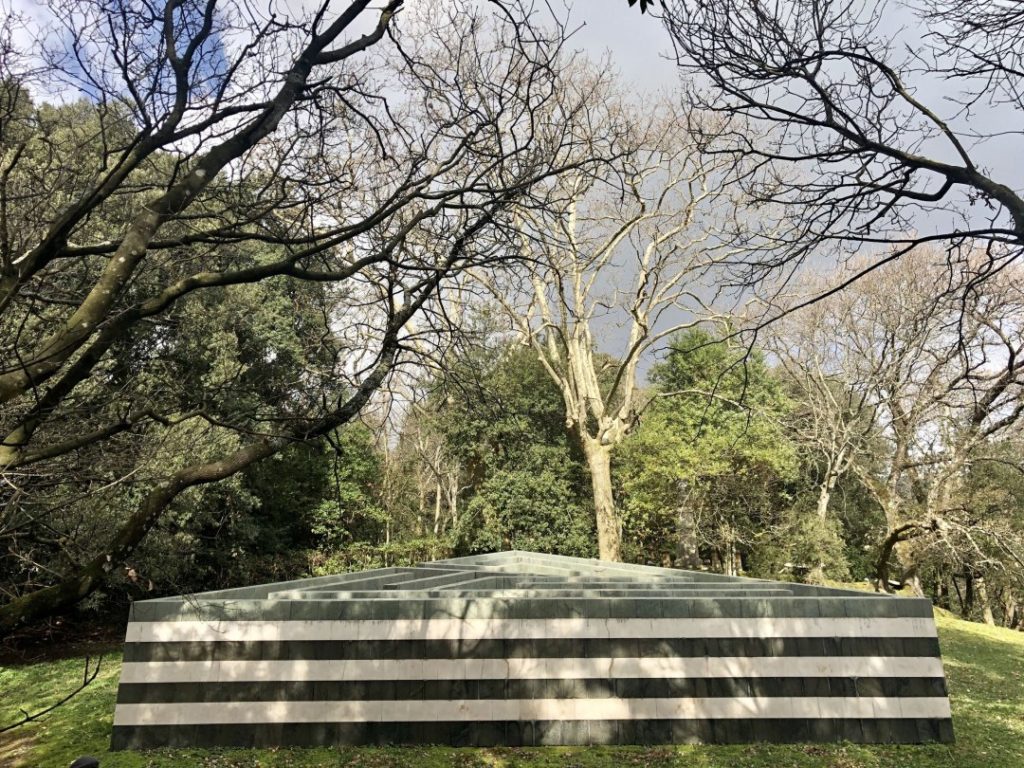
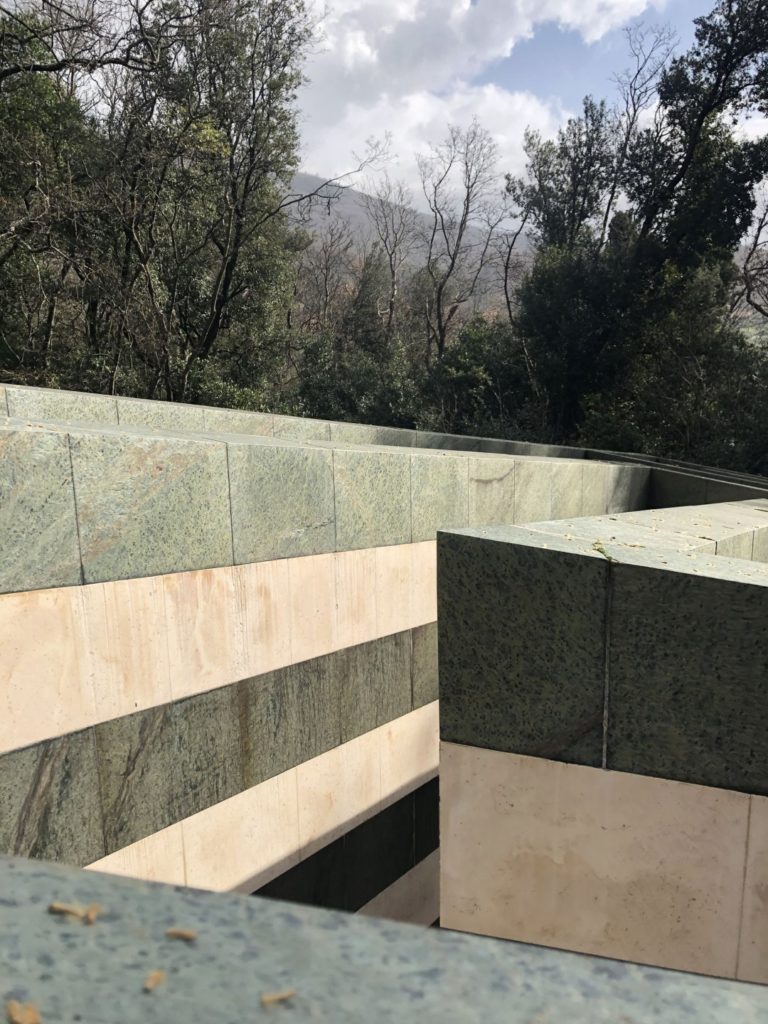
The relationship between Giuliano Gori and Robert Morris has continued over the years, reaching a partnership to realize numerous other projects, both in Celle and in outdoor spaces. This collaboration has allowed Robert to boost his creativity, discovering in Celle a stimulating place to find new ideas, projects and techniques.
A tour among the Works
A walk through Fattoria di Celle will allow you to find out the Collection, that holds surprises and arouses emotions. At the entrance you will observe the work Grande ferro Celle (Big iron Celle, Alberto Burri, 1986), in red painted steel, which introduces the installations in the Park and consists of two identical triangles connected by curved bands. In front of the precious facade of the Villa, you will be welcomed by three blindfolded men supporting a round plane, from which a relief drawing emerges (Servi muti, Silent Servants, Roberto Barni, 1988).
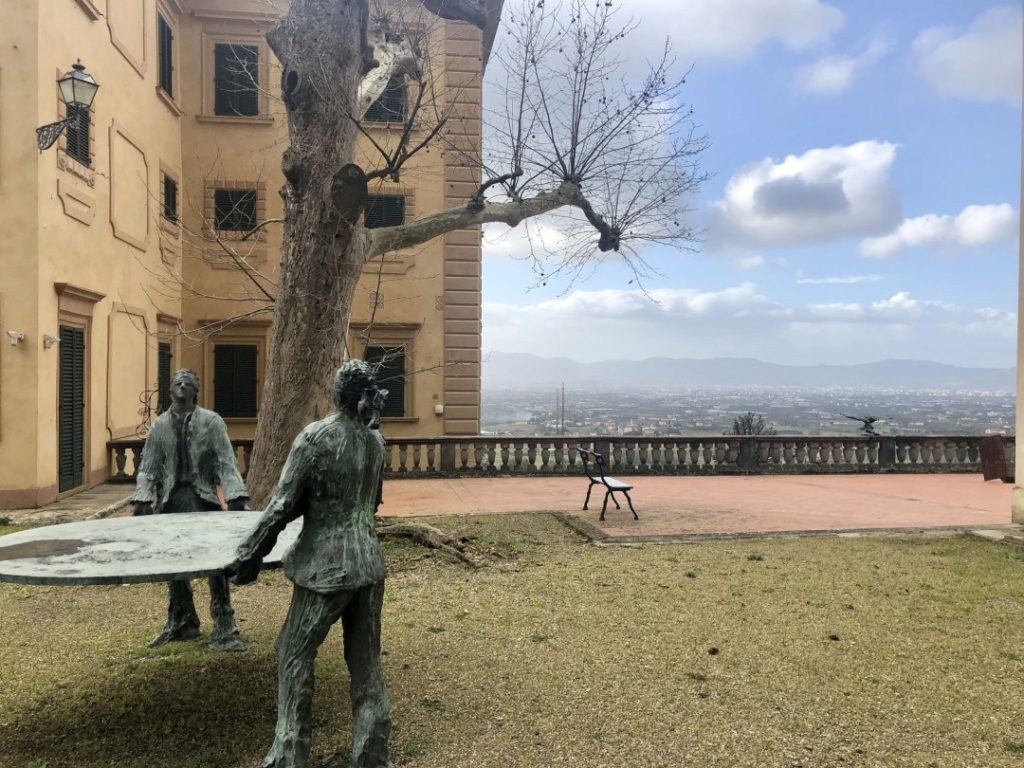
There are numerous sculptures by Robert Morris in Celle, including the above lead image Venus, 2012, alluding to a Paleolithic fertility goddess, and Labirinto (Labyrinth, 1982), shaped like an equilateral triangle, made up of white and green bands referring to the Romaniche churches in Tuscany. In a small woodshed in front of cascina Terrarossa, you’ll see the work I caduti e i salvati (The fallen and the Saved, Robert Morris, 2000), which consists of eight jars (orci) in fiberglass, suspended from the ceiling and free to float, apart from one resting on the ground.
The shape of the objects derives both from the large containers for olive oil still present in the historic mill of Celle, and from ancient funerary urns, observed in some Sicilian museums during a journey made by Morris, immediately before the realization of the work.
As you approach the eighteenth-century chapel of Villa Celle, you will be welcomed by Porta Sonora (Sound door, Daniele Lombardi, 2016), a bronze portal which shows the original score of the composition Vergine Madre by the artist and composer, a solo for violin inspired by Dante’s last Canto del Paradiso (Divina Commedia): every time you open the door, the recording of the composition is broadcasted.
Between the lake and Palazzina del Tè, you will be greeted by Spazio Teatro Celle (Theater space Celle, Beverly Pepper, 1992), where the artist, enhancing a falling gradient space, has created at the same time a work and a working theatre.
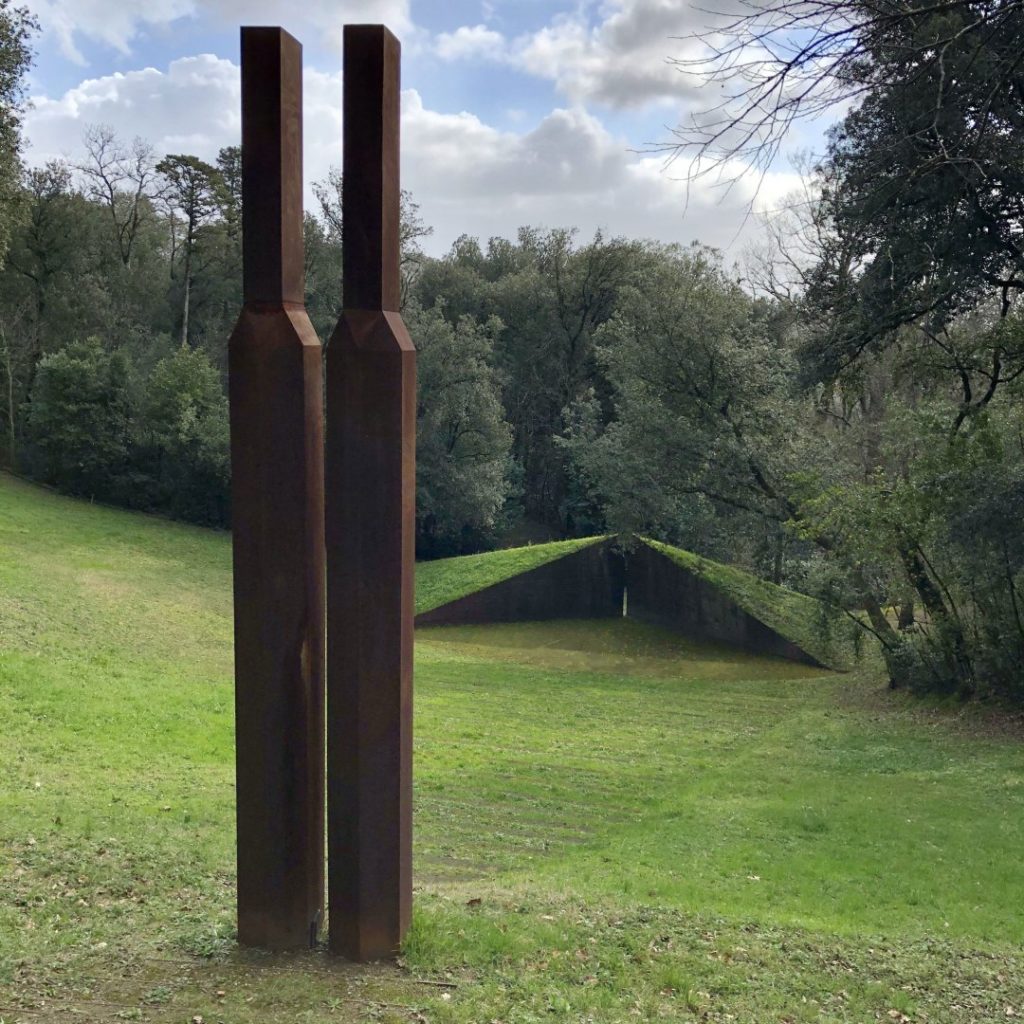
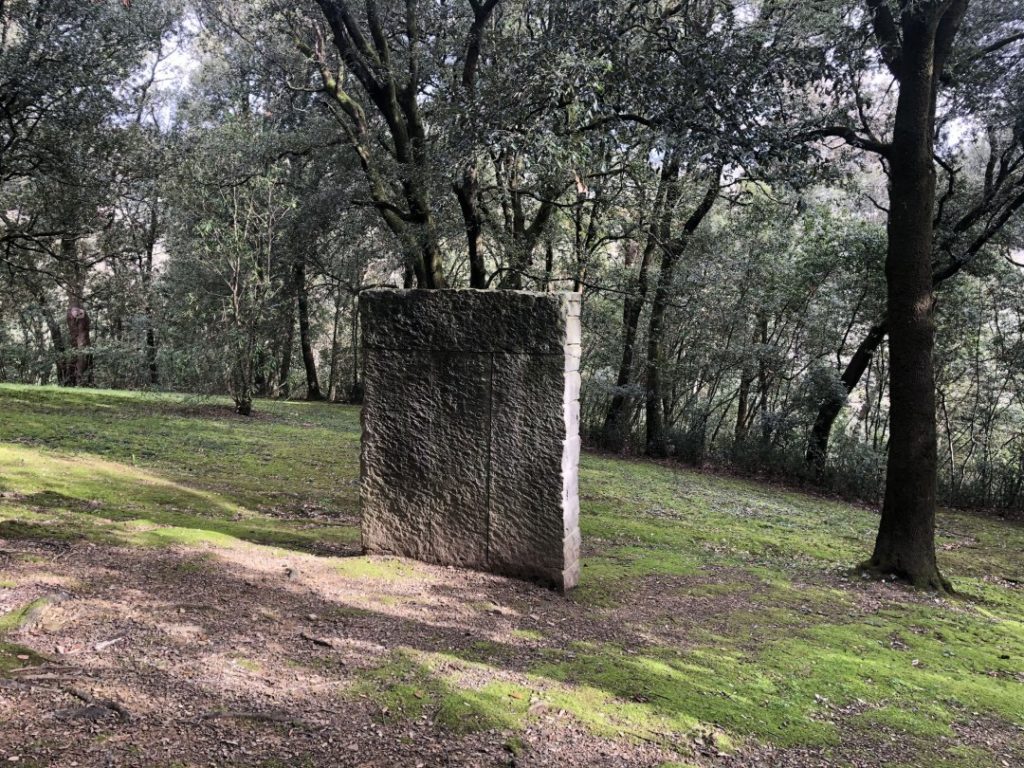
In summer, the theatre hosts music, dance and contemporary art performances. Almost certainly inspired by an ancient Greek teatro, at the bottom two walls covered with cast iron bas-relief panels act as a backdrop, while two columns stand at the top. The audience sits on the steps, made by tuff blocks and covered with grass, welcoming about three hundred spectators.
Art and passion for wine
Around Fattoria di Celle you will see olive groves and vineyards to produce oil and wine, considered as an element that marks the bond with the land. Vineyards are cultivated with loving care and wine is produced with artisan attention, combining ancient methods with modern winemaking techniques. Following the Tuscan tradition, the most cultivated grape is Sangiovese, to obtain Chianti DOCG “Fattoria di Celle” and Rosato “Pina“.

Fattoria di Celle Chianti is pleasant and persistent, fresh and fruity with hints of black cherry, currant and a floral note of violet, harmonious, with good structure and soft tannins. Sweet and fragrant, with floral notes of rose and fruity aromas of wild strawberry, ripe cherry, raspberry, fine, elegant and velvety: the is Fattoria di Celle’s Pina. Merlot and Syrah are cultivated as well, to produce Il Cardinale, firm, harmonious and well- structured, with velvety tannins and vanilla notes. Here everything is nature and art, so that wine is stocked in bottles that show labels designed by the artists who stayed in this amazing venue.
Like the Celle wine’s Il Cardinale label, designed by the Iranian artist Hossein Golba, present in the Park with the work Le Fontane dell’Amore (Fountains of Love, 1993), to make drinking water available at different points in the Park. Seven of them were offered by Collezione Gori to Giardino di Boboli in Florence. The label represents a red cup inside a blue cup, symbolizing the precious treasure of the work done in the vineyard.

Another lovely label is Pina‘s, designed by the artist Luigi Mainolfi: a bench which recalls his installation Per quelli che volano (For those who fly, 2010), dedicated to Pina Gori and inspired by her passion for sunsets: a bench placed on the roof of the Fattoria, to observe enchanting sunsets.
A unique story
Truly, Fattoria di Celle represents a unique and original story that continues with Giuliano Gori and his great family. The fil rouge that links all its many facets is passion: for art, environment, nature, for the products of the land such as wine. And, most of all, passion to find out people in their authentic human and artistic expression.
References:
[1] Fattoria di Celle Collezione Gori. Walk through site specific art, Gli Ori, Pistoia, 2012.
[2] Renato Barilli,. Art in Arcadia. The Gori collection, Celle: a Tuscan patron of contemporary art at his country house. Allemandi, Torino, 1994.
[3] Vicki Goldberg. “A Garden of Sculpture as an Up-to-Date Eden.” Art and Architecture. New York Times, July 11, 1999.
Visits:
Note: At the moment, due to the current health emergencies with COVID-19, Fattoria di Celle recommends visiting the website of the Collection www.goricoll.it, where “Visit” page will be updated with the current conditions. Otherwise, you can usually visit Fattoria di Celle and the Park by appointment, with a guided tour of about four hours.